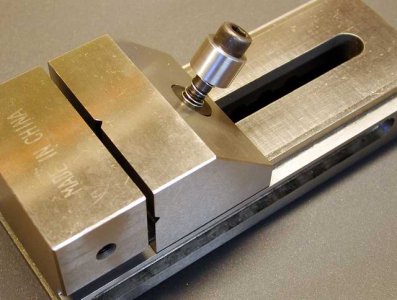Not sure were talking about the same thing, about "the pin dropping out of the slot" (me) and "I don't lose the locating pin" (you). In my case, the vise came with a long pin that spanned across the full width of the vise. This meant the pin had to me pulled out enough to release the screw and reinserted in a new position. I didn't like this, so I made a short pin that only engaged the half-slot hole down the middle. When the screw was loosened, the short pin would fall down, out of the slot. This was handy for moving the jaw back and forth, but was not so good when just inserting another part. I put in the spring under the screw-head to keep the pin held up snugly in the slot.
View attachment 505162
View attachment 505165
(Notice the vise sides do not have the slot milled yet.)
View attachment 505163
The spring caused the bolt head to be pushed up, as the spring remained in the slot. Shiny thin up under the bolt head is sleeve to capture the spring and keep it under the bolt head.
View attachment 505164
Here the milled slot is shown, along with my shop made clamps.
View attachment 505166







